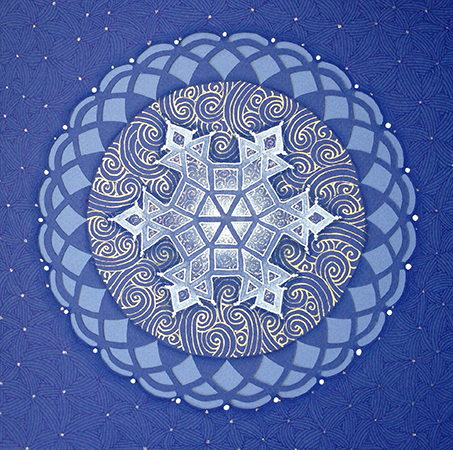
In November I was blessed to be asked to teach several classes to a wonderful group of Certified Zentangle Teachers at a retreat in Maine. Two of the classes were a series. In the first class I taught the Lace and Convergent Shading techniques. The second class was a project that was inspired by the tangled drawings I had seen posted that had been done on paper doillies. I had paper laser cut with a simplified lace design and used the Lace and Comvergent Shading techniques to create the following winter inspired design. I call it WinterLace.

The project uses metalic gold and clear stardust (sparkles) Gelly Roll pens which are difficult to photograph. However, this photo is a pretty good example of the finished product.
These two classes were very well received and as a result, in partnership with Acadia Laser Creations, I decided to make it into a kit.
The kit contains instructions for both classes (a 2-fer) and all the materials and supplies you need to create your own WinterLace project.
The Kit materials include a laser-cut pattern on dark blue paper, a light blue background sheet, a white mat with foam core backing and protective sleeve, 3 gel pens, 2 colored pencils, a royal blue Micron and 2 tortillons.


“But wait … there’s more!”
My fellow CZT, Jenny Perruzzi, suggested I should include a stencil that would allow you to draw the same lace shapes that are laser-cut in the kit. I rarely encourage the use of stencils in Zentagle as I feel they can too easily become a crutch and support that inner critic that says “I can’t draw” (therefore I need a stencil). Well she cut one for me anyway and I had a lot of fun with it. I realized that this project is actually considered Zentangle Inspired Art (ZIA) so playing is OK, and the stencil actually reinforces some of the concepts taught in the Lace technique.
So included in the kit is a 3-in-1 stencil to play with and create endless designs. There are 3 sizes on the stencil: Small (Zendala size), Medium (same size as project piece – a zendala tile fits in the center) and Large (Opus size). The overall stencil measures 10.5″x10.5″. See photo below.

Here are some sample pieces I created using the stencil.

This piece was drawn on a 10.5 x 10.5 Opus tile and
uses the large size stencil.

This piece was drawn on a 4-5/8″ Zendala size tile and
uses the small size stencil

This piece was drawn on an 8″ square and
uses the medium size stencil.

This example also uses the medium size stencil but
shows the use of a separate Zendala placed in the center.
So you can see, once you learn the techniques there is no end to what you can create.
Here’s what other Tanglers are saying about the kit…
“Lynn takes intimidation out of the drawing equation. What might appear to be a complex drawing becomes a simple step-by-step process with Lynn’s clear and easy instruction.”
“Lynn’s project is awesome! I was overwhelmed by the artistry of the finished product.”
“Lynn’s easy step-by-step instructions will put you right at ease and have you feeling like a pro in no time! Not to mention feeling like a creative genius with the beautiful end product you will create with this amazing kit!”
“Lynn’s unique perspective on the world translates into easy to follow design techniques so that anyone can create beautiful art work.”
The WinterLace kits are now available on Etsy for an introductory price of $65.00 through the Winter Solstice, Dec. 21.
https://www.etsy.com/…/498115…/the-tanglelace-winterlace-kit
I’m very excited to reach a larger audience with the classes contained in this kit.
Blessings,
Lynn

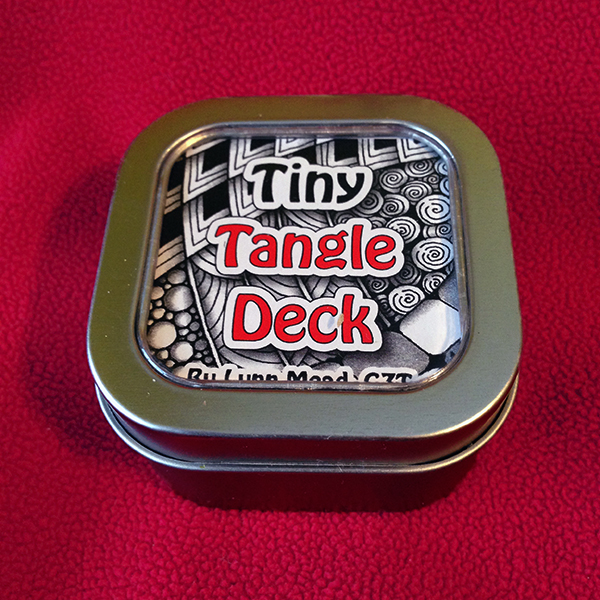



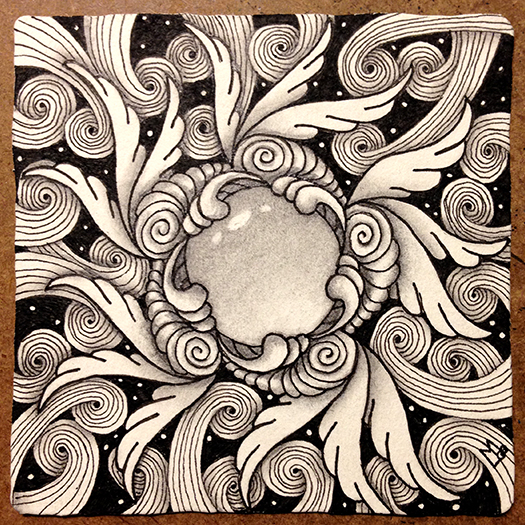





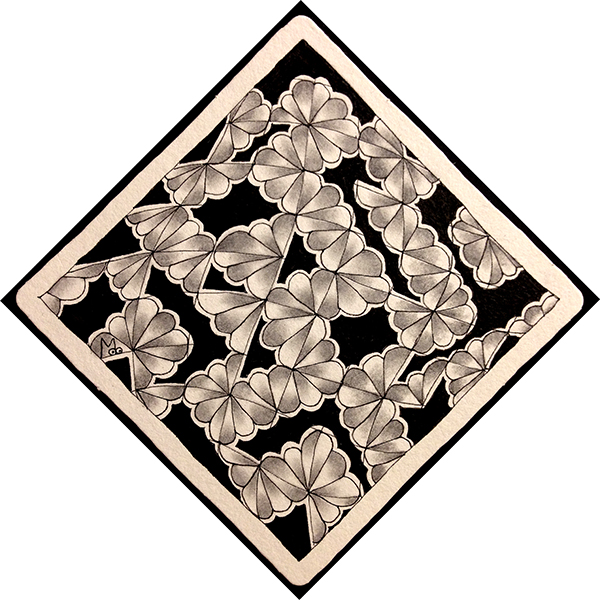












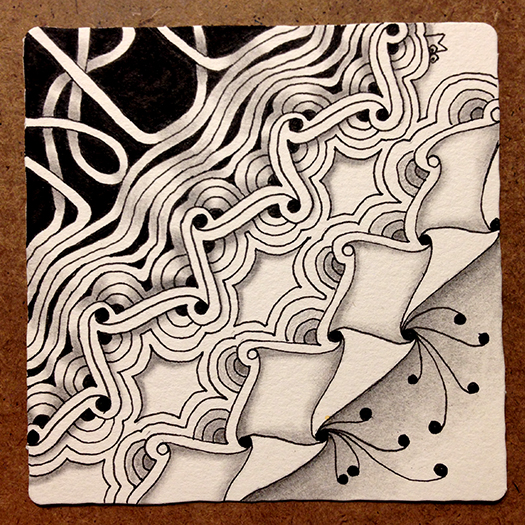




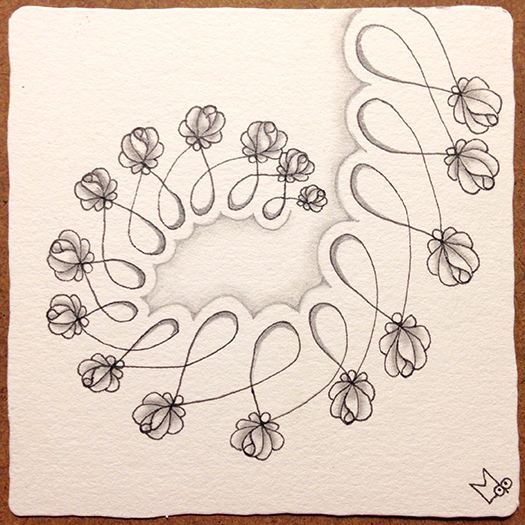







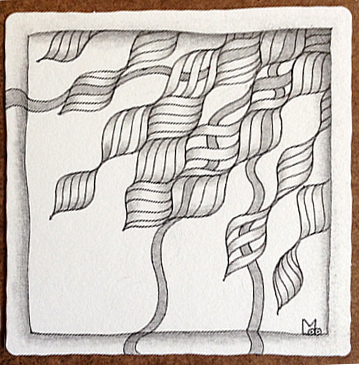








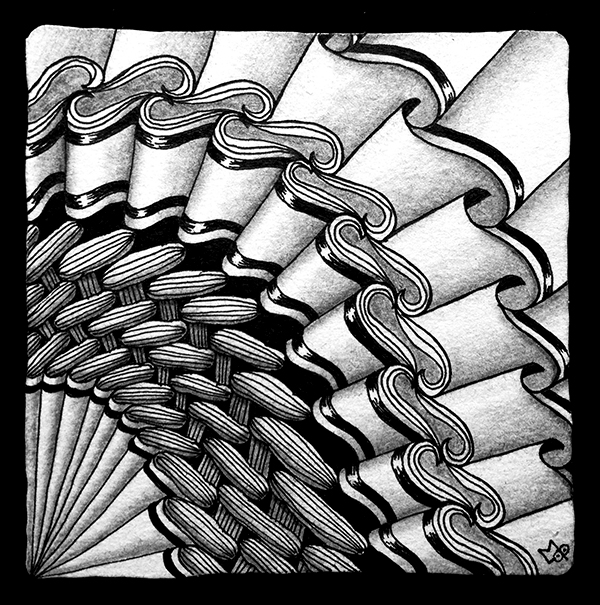

 As I began to get a feel for C-Scape I decided to start a tile. While C-Scape makes a great border I wanted to do something else. I settled for a curved stacked effect. I started with the C-Scape in the middle and worked out from it in both directions to the edges. As I worked I didn’t really know where this was going so I just kept adding one line at a time.
As I began to get a feel for C-Scape I decided to start a tile. While C-Scape makes a great border I wanted to do something else. I settled for a curved stacked effect. I started with the C-Scape in the middle and worked out from it in both directions to the edges. As I worked I didn’t really know where this was going so I just kept adding one line at a time.


